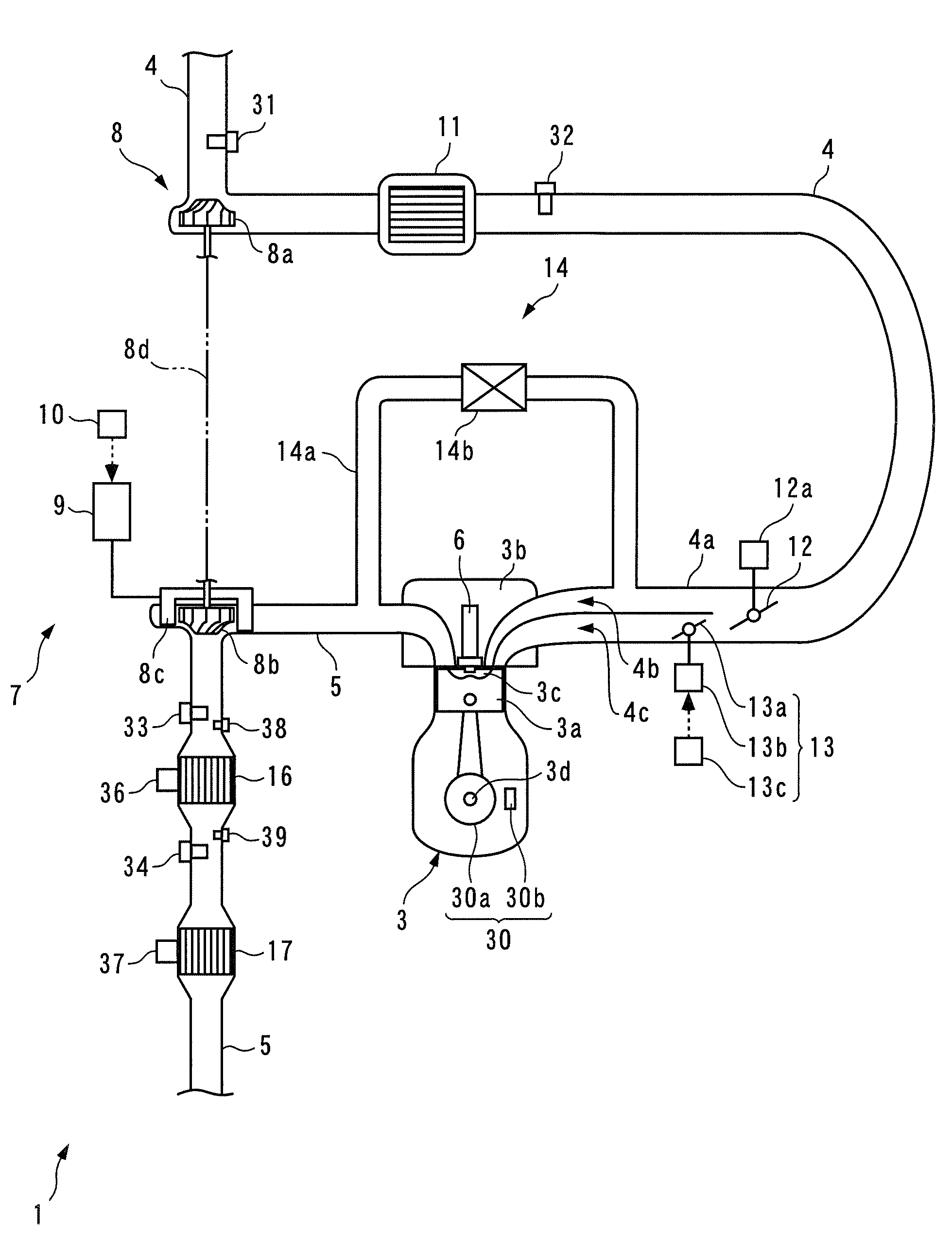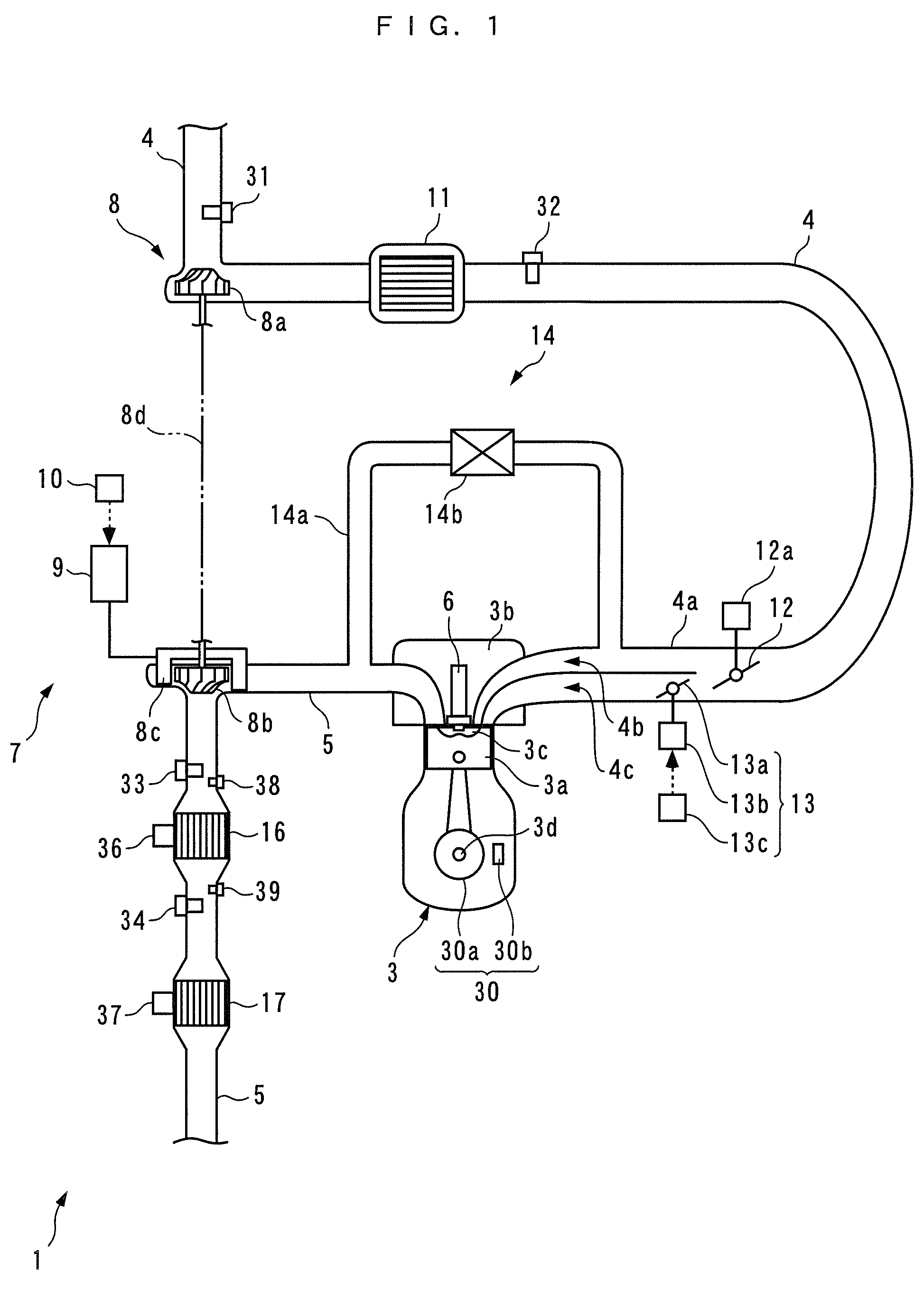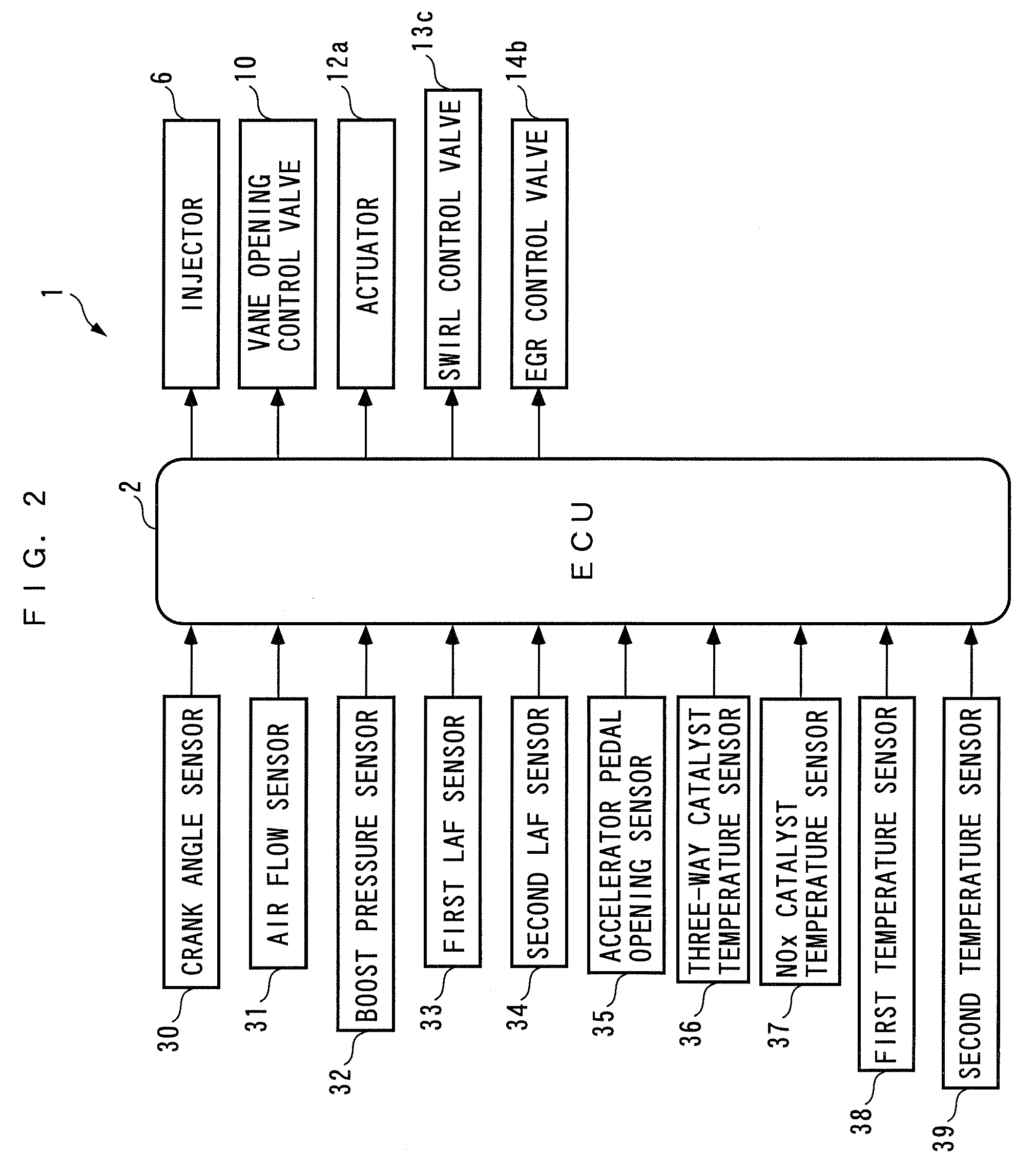Exhaust emission control device and method for internal combustion engine, and engine control unit
an emission control device and internal combustion engine technology, applied in electrical control, exhaust treatment electric control, separation processes, etc., can solve the problems of increased exhaust emissions, increased exhaust emissions, and excessive supply of reducing agents, so as to reduce the amount of heat generated by oxidation reaction, the degree of catalyst degradation is higher, and the storage capacity and oxidation capability of the catalyst is reduced.
- Summary
- Abstract
- Description
- Claims
- Application Information
AI Technical Summary
Benefits of technology
Problems solved by technology
Method used
Image
Examples
first embodiment
[0097]FIG. 9 shows the process for estimating degradation of the three-way catalyst 16, which is executed by the exhaust emission control device according to the According to this process, from the mutual relationship between the upstream temperature TTWC1 and the downstream temperature TTWC2 of the three-way catalyst 16 detected by the first and second temperature sensor 38 and 39, the degradation degree DEGRA of the three-way catalyst is estimated, and according to the estimated degradation degree DEGRA, the first degradation-dependent correction coefficient KDEGRA1 to be applied to the reducing agent amount reference value S_QDAREF in the step 9 in FIG. 3 is calculated.
[0098]In this process, first, it is determined whether or not an estimation completion flag F_DONE is equal to 1 (step 50). If the answer to this question is affirmative (YES), i.e. if the estimation of the degradation degree of the three-way catalyst 16 is completed, the present process is immediately terminated....
second embodiment
[0113]FIG. 16 shows a process for estimating degradation of the three-way catalyst 16 according to the present invention. According to this process, the air-fuel ratio of exhaust gases at a location downstream of the three-way catalyst 16 is estimated, and from the relationship between the estimated second estimated air-fuel ratio AF2_EST and the second actual air-fuel ratio AF2_ACT detected by the second LAF 34, the degradation degree DEGRA of the three-way catalyst 16 is estimated.
[0114]In this process, first, it is determined whether or not the degradation estimation completion flag F_DONE is equal to 1 (step 70). If the answer to this question is affirmative (YES), i.e. if the estimation of the degradation degree of the three-way catalyst 16 has already been completed, the present process is immediately terminated.
[0115]On the other hand, if the answer to the question of the step 70 is negative (NO), it is determined whether or not the rich spike flag F_RICH is equal to 1 (step ...
PUM
 Login to View More
Login to View More Abstract
Description
Claims
Application Information
 Login to View More
Login to View More - R&D
- Intellectual Property
- Life Sciences
- Materials
- Tech Scout
- Unparalleled Data Quality
- Higher Quality Content
- 60% Fewer Hallucinations
Browse by: Latest US Patents, China's latest patents, Technical Efficacy Thesaurus, Application Domain, Technology Topic, Popular Technical Reports.
© 2025 PatSnap. All rights reserved.Legal|Privacy policy|Modern Slavery Act Transparency Statement|Sitemap|About US| Contact US: help@patsnap.com



